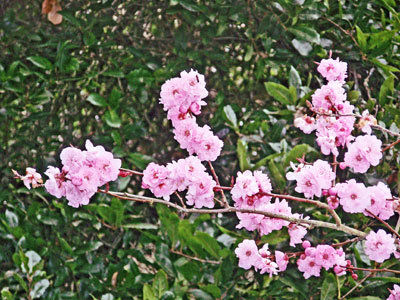There are few things in life that are as optimistic as planting a fruit tree.
Knowing your new apple tree might survive 80 years and a pear tree as long as 40 years makes your job as steward that much more important. It’s a good idea to do some planning on where and how you plant your new addition.
First of all, consider how your soil drains. Many fruit trees are forgiving, as long as they’re not sitting for days at a time in waterlogged soil. Moist is fine. But when you dig your hole, fill it with water as a drainage test. If it doesn’t drain in a day or less, consider planting on mounds. Cherries especially need good drainage, with apricots close behind.
Choose fruit trees that ripen at different times. You don’t want so much fruit in July that you’re begging people to take it or you’re leaving it on their doorstep and running, like the zucchini people.
Some fruit trees need a pollenizer to bear fruit, so keep that in mind and make sure to ask when you buy your tee.
These are just a few suggestions. Let your taste buds be your guide.
Take a look around your property for spots where there is enough sun in the growing season to make your new plant or tree happy. Don’t worry if you don’t have much sun in the wintertime; the plants are dormant then anyway. It’s the growing season — from about April to September — when your site should get five to six hours, minimum, of sun.
How much space do you need? Trees come in different mature sizes. Room is not so much a factor, because you can find dwarf and semi-dwarf varieties if need be. Nut trees are the exception and do require more space.
There are fruit trees available that have already been espaliered to grow flat against a fence or wall. Plus, a fruit tree can serve double duty as a focal point or shade tree, if it is limbed up enough to walk under.
Semi-dwarf trees are two-thirds the size of a regular tree (15 to 20 feet typically, although you can prune a little in the summer to keep them shorter). This is the most popular size, as pruning and harvesting are within reach of medium-sized ladders.
There are many dwarf varieties of peaches, nectarines, apples, almonds and cherries that range in size from 6 to 12 feet tall.
Selecting a more mature bare-root tree will give you fruit sooner than one that has a trunk of only half an inch across.
Trunk caliper of 5/8-inch is a good size. If you are planting a home orchard, it may be more economical to buy smaller sizes, but you’ll have to be patient for your first harvest. Dreaming about that row of flowering cherries or plums bordering the sides of your driveway? You’ll realize that vision more quickly by going with the larger trees.
So, you’ve chosen your dream tree, it’s wrapped in a plastic bag to transport home without drying the roots, you’ve dug a hole large enough to accommodate the roots, amended the soil as needed and pruned off any damaged roots. Now what?
Find the graft at the tree’s base, and make sure when you fill in the hole with soil that the graft is above the ground. Make a watering ring around the tree and flood it with water, to settle in the roots. This will eliminate air pockets.
Now, don’t water it again until the soil is dry an inch or two down. Winter rains may take care of this for you for a long time. As I mentioned, cherries and apricots need excellent drainage, and you may need to plant them on a mound to ensure this.
If you can’t plant your new tree, shrub, berry or rose right away, be sure to cover the roots with moist soil.
Only stake your new tree if you live in a windy area. A trunk will attain a larger diameter if it’s allowed to move slightly in the wind.
Usually, it’s not necessary to prune a young tree much while it is trying to grow new roots. Trimming a long branch or leader by a third is OK if necessary. You can start limbing up after a couple of years, if you wish.
I encourage you to add both edibles and ornamentals to your garden. You’ll be investing in the future.
For example, blueberries offer more than yummy berries to eat. They make beautiful hedges with gorgeous fall color. Include two types for better production, such as a Berkeley, Bluecrop or Blueray. Other edibles that are available now are asparagus, artichokes, strawberries, grapes, blackberries, boysenberries and raspberries.
Plant something new while it’s available bare root. You won’t be disappointed.
Jan Nelson, a landscape designer and California certified nursery professional, will answer questions about gardening in the Santa Cruz Mountains. Email her at ja******@*ol.com, or visit www.jannelsonlandscapedesign.com to view past columns and pictures.













